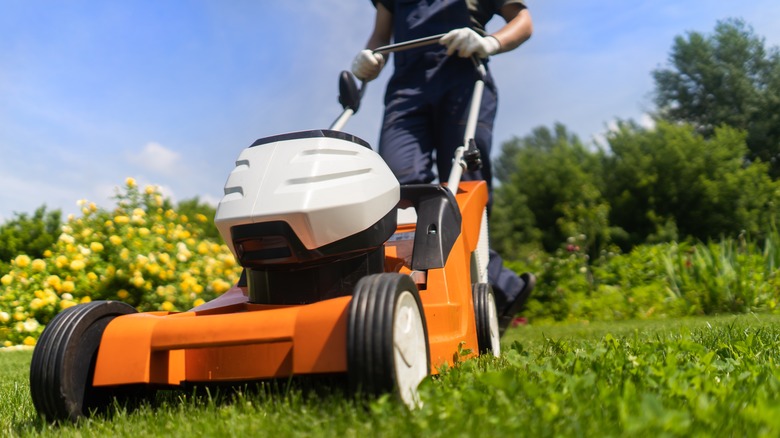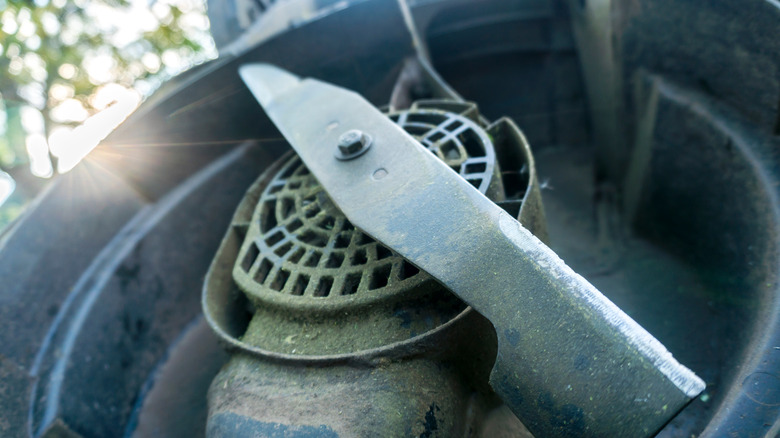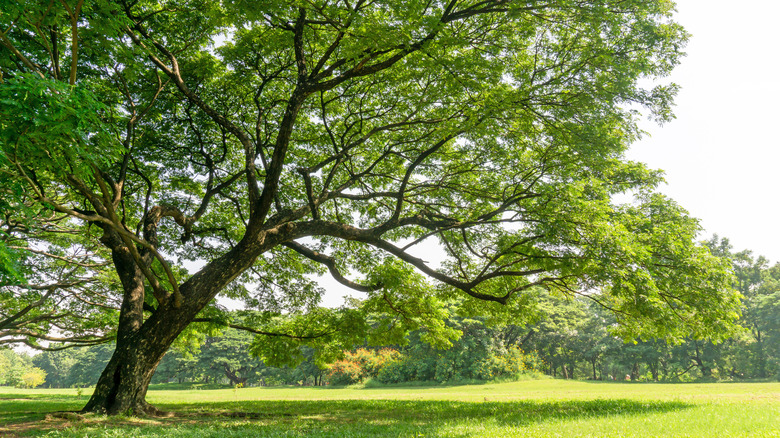This Mowing Tip Will Help You Grow Healthy Grass In The Shady Parts Of Your Yard
Growing a lush, green lawn is a true science. Although many novices assume that it's as simple as pushing a mower around every once in a while, it takes much more planning and care than that to achieve the ideal look. This is even truer when dealing with patches of grass in shady areas, as they require extra TLC to compensate for the lack of sunlight.
Even if your lawn is handled on an ideal schedule and with plenty of precaution, your mowing height will make or break grass patches in shady spots. Fortunately, there's a pretty easy fix that only involves making a slight height adjustment to the mower's blade. It goes like this: No matter your grass type, blades situated for shady areas should be higher than for their full-sun counterparts. This is because the extra blade surface area will encourage photosynthesis to occur even in reduced shade, which will help it grow despite lackluster conditions.
So, when you get to the shaded portions of your lawn, adjust the blade about 0.5 inches to 1 inch higher than it was positioned for the sunny parts of your yard — or just mow the whole lawn at this higher level if you don't want to change it halfway through.
The exact height you should use depends on your grass
Many factors, including your mower blades' height, contribute to the overall health of a lawn. Some people cut the lawn very short to mow it less often; however, scalping it like this is detrimental to the lawn's overall health because it encourages weed growth and makes the blades weaker in the face of drought. The proper height to set your mower's blade to depends on the type of grass you're cutting. For example, Bermuda and Zoysia grasses both thrive when cut between 0.5 and 2 inches, but fescue requires a height of 2 to 3 inches. Moreover, it's important to keep your lawnmower's blades sharp because dull blades can increase the risk that a lawn could develop disease or fall prey to annoying pests.
Finally, there's your lawn fertilizer schedule, which a lot of people have handled by experts. Although this varies based on location and climate, the general rule of thumb is that fertilizer should be applied roughly once a month to once every month and a half. This will help keep even the shadiest of spots healthy, and you'll then maintain it with the adjusted height of your mower blades.
Why grass in shaded spots needs extra height
Nothing ruins a beautiful lawn quite like a dead or thinning spot in otherwise green grass. Often, these areas are situated directly under mature trees because the leaves and branches block out a lot of sunlight. However, a lesser-known reason that grass fails to thrive in such spots is that the tree roots are actively trying to hog all of the water. Healthier, taller grass is better able to fight back against bigger and stronger tree roots and claim some photosynthesis-driving nutrients for itself.
Give raising the mower blade a consistent try to combat thinning grass. You can also give it a little extra power by overseeding with shade-tolerant grass seed at the appropriate time of year. The type you select will heavily depend on your specific climate, however, so consult a local expert to find the best fit for your yard's needs. Shade can be a very good thing and provides a lot of relief to people and animals, but when it comes to grass, it can certainly complicate things.


